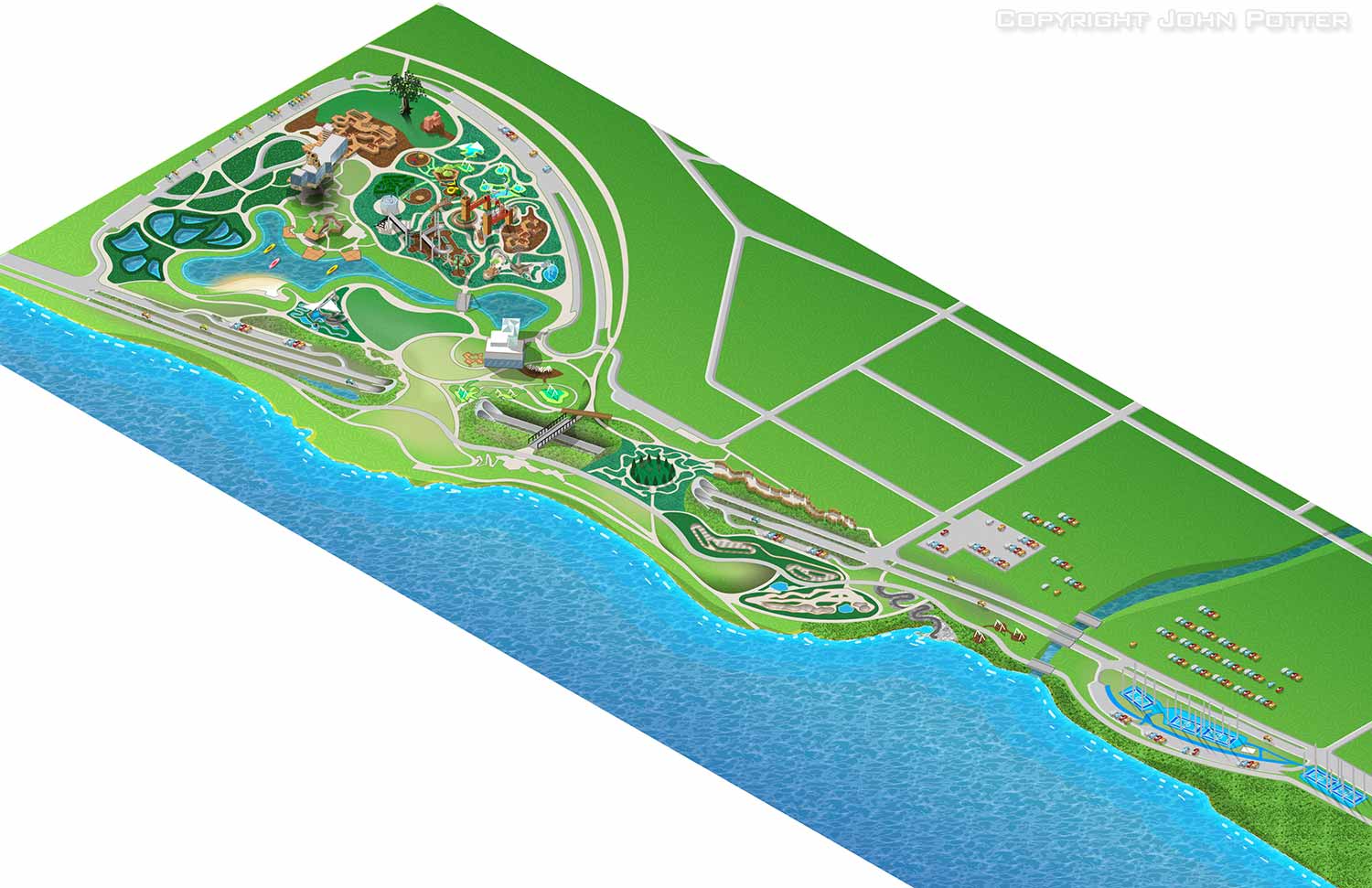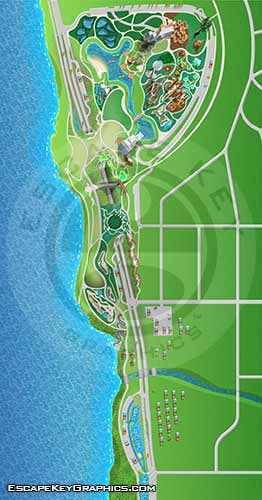Public Park Illustrated Map
 This project was brought to me by Speak Creative in Nashville, Tennessee. Right off I have to say that their staff had already made a very good overhead, vector based map that served as the basis of the work I did. Their client who was building a large public park in Tulsa, Oklahoma called The Gathering Place wanted a classic axonometric theme park style illustrated map.
This project was brought to me by Speak Creative in Nashville, Tennessee. Right off I have to say that their staff had already made a very good overhead, vector based map that served as the basis of the work I did. Their client who was building a large public park in Tulsa, Oklahoma called The Gathering Place wanted a classic axonometric theme park style illustrated map.  In the end I also supplied a flattened, overhead view of the fully illustrated version that may be integrated into an app. Jacob Savage and the rest of the people at Speak Creative were great to work with. They provided excellent direction and communication. I look forward to our next project together.
In the end I also supplied a flattened, overhead view of the fully illustrated version that may be integrated into an app. Jacob Savage and the rest of the people at Speak Creative were great to work with. They provided excellent direction and communication. I look forward to our next project together.
ILLUSTRATED PARK MAPS:
If you are the manager of a botanical garden, a staff member for a Parks and Recreation department or have any similar job title part of your responsibility is helping guests to your park or parks find their way around without getting lost and I can help.
The term "parks" covers a lot from ball parks where kid's play matches to theme parks and nature preserve type parks. Over the years I've made maps for all kinds of parks, nature preserves, wildlife sanctuaries, botanical gardens, theme parks, you-pick agribusiness farms and just about anything else you could refer to as a park. In all cases finding what you are looking for geographically in a friendly and visually appealing manner was the task. I handle each project specific to the needs of the client and the location, so some the maps I've made are pretty realistic and range to a bit cartoon like. When you contact me about your map I will discuss your needs with you and together we can decide which approach is best for your venue.
WHAT ARE AXONOMETRIC AND ISOMETRIC ILLUSTRATIONS?:
Axonometric and isometric drawings don’t have realistic perspective. I use specific mathematical formulas to draw this way. In these images things further away don’t appear smaller and therefore have equal weight of importance to things nearby. My axonometric maps and illustrations are generally bold and have a slightly cartoon like look. This method of rendering perspective is commonly used in technical and engineering drawings. I began using this method of drawing as an illustration tool in 2007.
The difference between isometric and axonometric is isometric drawings are really just from a straight on corner angle but axonometric drawings can be from other angles. Most of my illustrations have parts that are isometric, but are largely axonometric. I have a habit of calling them all isometric, but I shouldn't.
